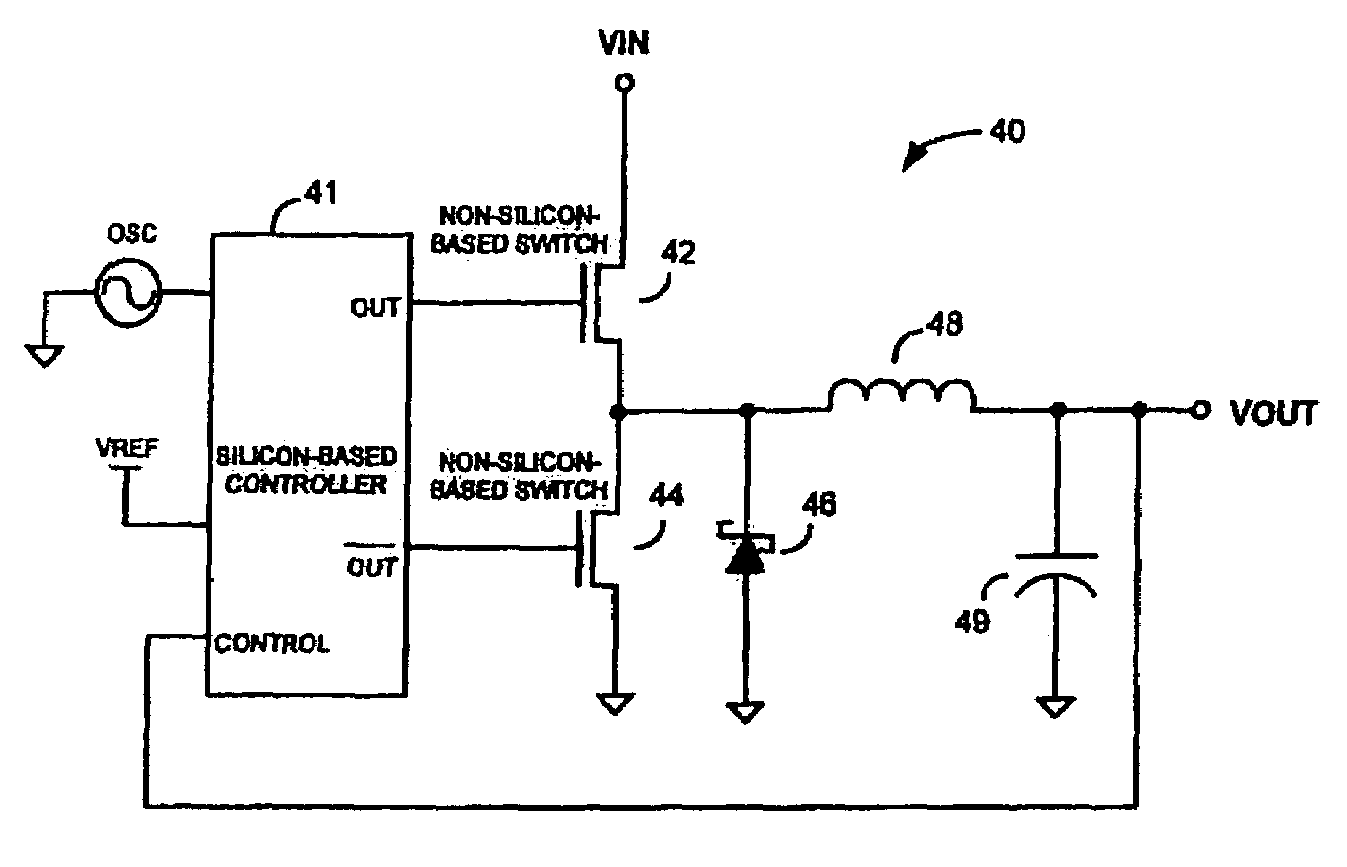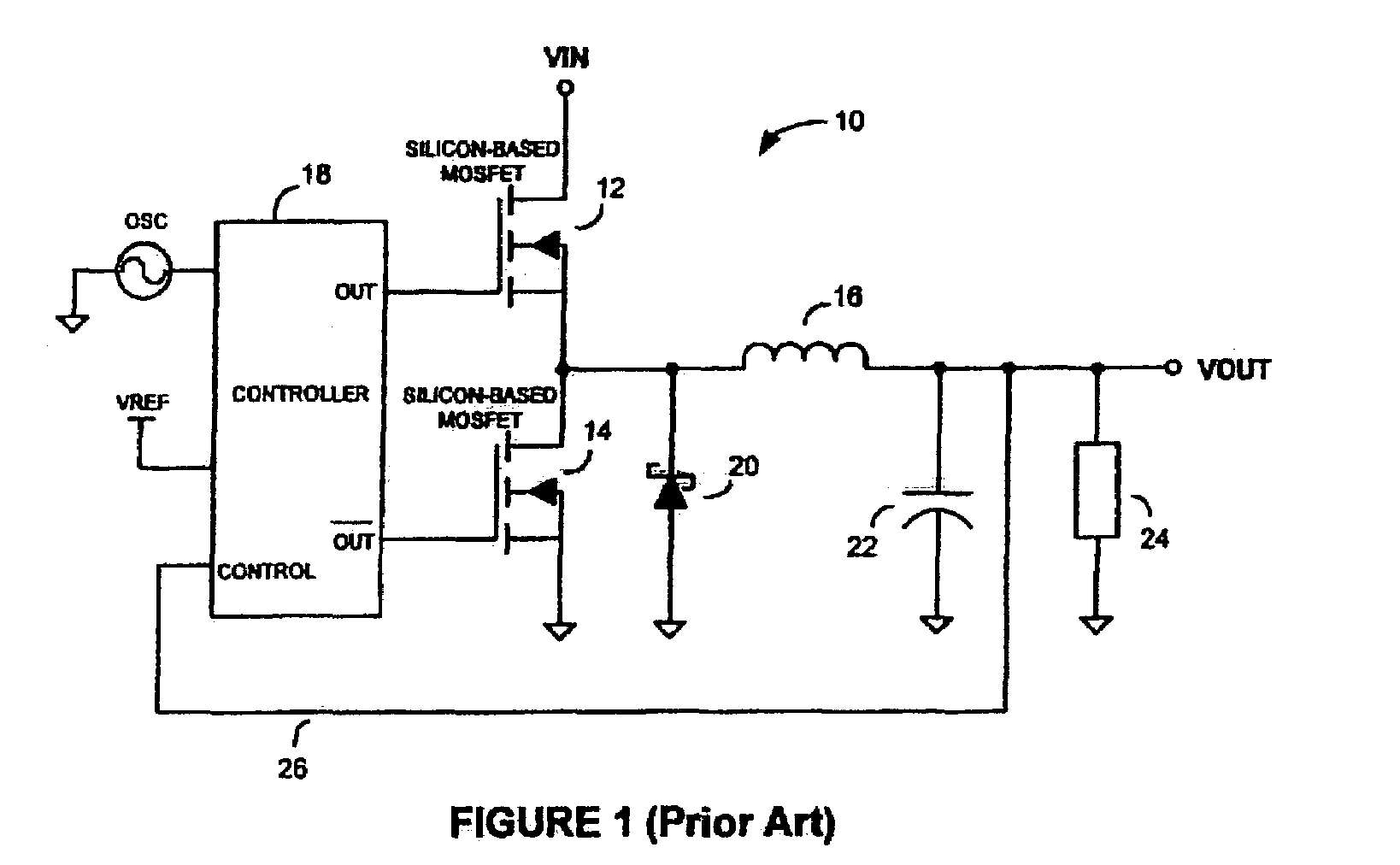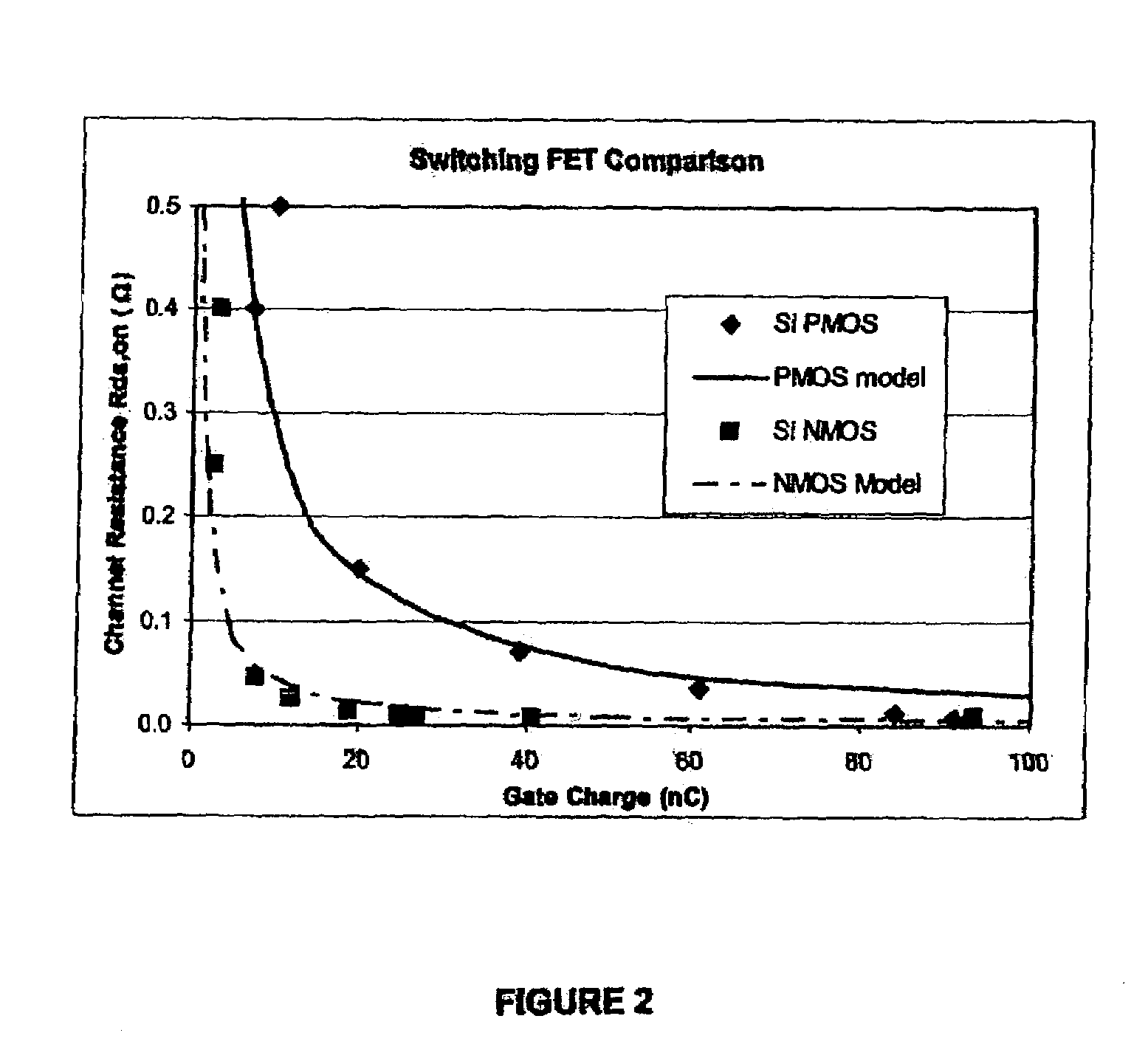Extremely high-speed switchmode DC-DC converters
a converter and switchmode technology, applied in the direction of electric variable regulation, process and machine control, instruments, etc., can solve the problems of inefficient dc at lower drive levels, extreme high 2 mhz switching frequency, and tendency to degrade linearity, so as to improve the efficiency and battery saving capabilities of wireless devices
- Summary
- Abstract
- Description
- Claims
- Application Information
AI Technical Summary
Benefits of technology
Problems solved by technology
Method used
Image
Examples
Embodiment Construction
[0029]Referring to FIG. 4, there is shown a schematic diagram of an exemplary synchronous DC—DC power converter 40, according to an embodiment of the present invention. Converter 40 comprises a Silicon-based (e.g. CMOS) controller 41, non-Silicon-based switching transistors 42 and 44, a Schottky diode 46, an inductor 48, and a capacitor 49. FIG. 5 shows a schematic diagram of an alternative topology of a DC—DC converter 50, according to an alternative embodiment of the present invention. Converter 50 comprises a Silicon-based (e.g. CMOS) controller 52, a non-Silicon-based switching transistor 54, a diode 55, an inductor 56, and a capacitor 58. Unlike prior art power converters (e.g. the power converter 10 in FIG. 1), converters 40 and 50 are capable of following wide-bandwidth envelope variations of wide-bandwidth technologies such as, for example, EDGE and UMTS. Accordingly, as described in more detail below, the power converters of the present invention may be used to, for example...
PUM
 Login to View More
Login to View More Abstract
Description
Claims
Application Information
 Login to View More
Login to View More - R&D
- Intellectual Property
- Life Sciences
- Materials
- Tech Scout
- Unparalleled Data Quality
- Higher Quality Content
- 60% Fewer Hallucinations
Browse by: Latest US Patents, China's latest patents, Technical Efficacy Thesaurus, Application Domain, Technology Topic, Popular Technical Reports.
© 2025 PatSnap. All rights reserved.Legal|Privacy policy|Modern Slavery Act Transparency Statement|Sitemap|About US| Contact US: help@patsnap.com



